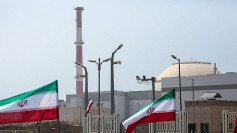Masahiro Hoshina, a Japanese farmer, begins worrying about the typhoon season months before it starts because of the storms of 2019 that left wasabi farms destroyed by torrential rain and landslides.
"Recently the power of typhoons feels totally different from before due to global warming. It's getting stronger," said the 70-year-old farmer in Okutama, west of downtown Tokyo. "Since it's happened once, there's no guarantee it won't happen again."
Wasabi, a pungent Japanese horseradish used in sushi, soba buckwheat noodle soup, and other dishes, is typically planted along streams in narrow valleys, making farms vulnerable to calamities.
After Typhoon Hagibis struck eastern Japan in 2019, productivity in Okutama was reduced by roughly 70% the following year. It took nearly three years for the sushi farms there to recover since they needed to be carefully tended to and replanted.
According to experts, global warming is impacting output not just by increasing the frequency and intensity of storms but also by raising temperatures that threaten plant growth, which depends on water that is consistently between 10 and 15 degrees Celsius throughout the year.
The tang of the wasabi is employed as a contrast with the raw fish in sushi and sashimi, which could be endangered if there is a shortage of wasabi.
Farmers of wasabi encounter other challenges than the weather. There are no successors due to an elderly rural population decline. According to the Agriculture Ministry, as a result of these two reasons, the output of wasabi grown in clear-flowing water, like at Hoshina's farm, has decreased to half that of 2005.
Norihito Onishi, head sales manager of the Sojibo chain of soba buckwheat noodle restaurants, has noticed how wasabi shortages and supply issues have negatively impacted his company's bottom line.
The restaurants were well renowned for letting patrons ground their own wasabi roots to make the hot paste that was served with soba. But they were forced to basically discontinue this.
"In the past, we served all the cold soba noodles with a piece of raw wasabi, but now we can no longer do that," Onishi said.
Onishi claimed that over the past five to ten years, there have been occasions when he hasn't been able to find any wasabi root at all, even though it was widely available when the restaurant initially opened 30 years ago. Only specific dishes now have access to the priceless root.
"If this unstable supply of wasabi persists, due to many factors including global warming, we will face a situation where we need to come up with other ways to overcome the problem so we don't end up not serving raw wasabi at all," Onishi said.






